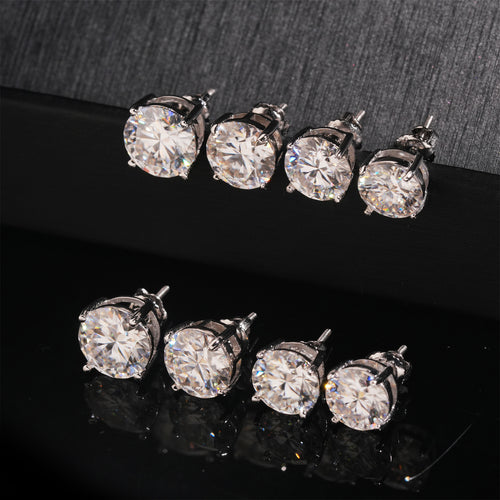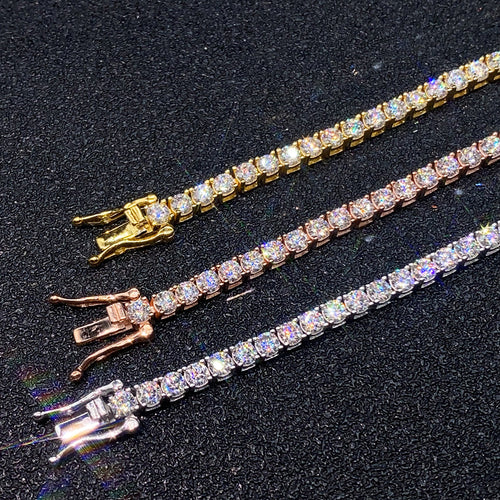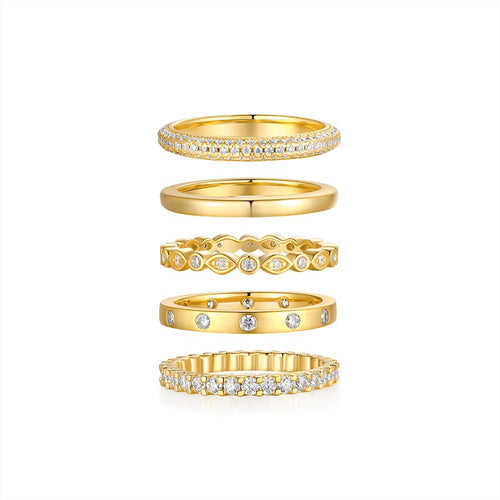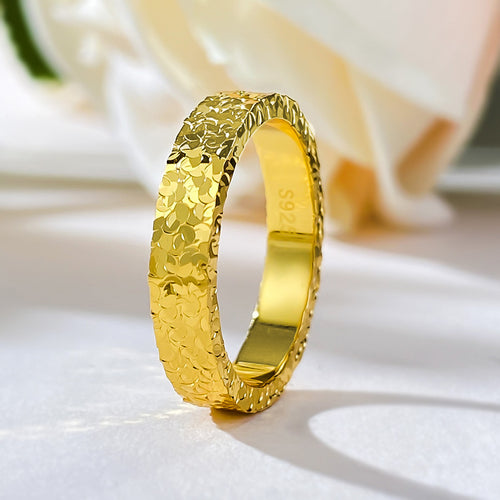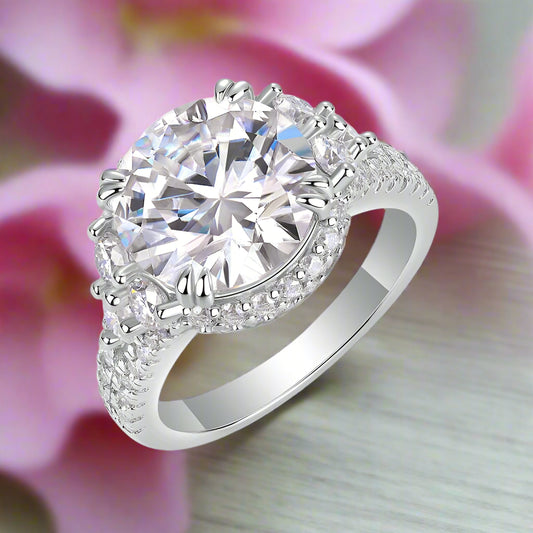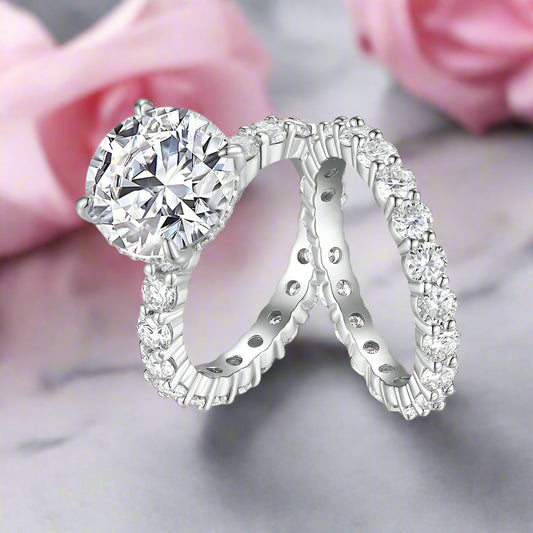Moonstone and rainbow moonstone are two of the most enchanting gemstones in the world of crystals and jewelry. Both belong to the feldspar mineral family, yet they are often mistaken for one another due to their shimmering light effects. However, their origins, optical phenomena, and cultural symbolism make them unique in their own right. If you’re choosing between moonstone vs. rainbow moonstone for your collection or jewelry, understanding their differences will help you make a confident decision.
What is Moonstone?

Moonstone is a gemstone from the feldspar group, primarily composed of orthoclase and albite. Its hallmark is adularescence - a glowing, moonlike sheen caused by light scattering between layers of minerals. This ethereal shimmer makes moonstone a favorite for spiritual jewelry, healing practices, and elegant accessories.
Moonstone characteristics:
-
Color range: White, cream, peach, gray, blue, or green with a glowing sheen
-
Hardness: 6 – 6.5 on the Mohs scale
-
Transparency: Transparent to translucent
-
Optical effect: Adularescence (soft, floating glow)
-
Origins: Sri Lanka, India, Madagascar, and the USA
What is Rainbow Moonstone?

Despite its name, rainbow moonstone is not a true moonstone. Instead, it is a variety of labradorite, another feldspar mineral. Its striking visual effect is called labradorescence, a multicolored play of light that creates rainbow-like flashes across the stone.
Rainbow moonstone characteristics:
-
Color range: Mostly white or colorless with rainbow flashes (blue, green, yellow, pink)
-
Hardness: 6 – 6.5 on the Mohs scale
-
Transparency: Translucent with vivid color play
-
Optical effect: Labradorescence (rainbow spectrum shimmer)
-
Origins: India, Madagascar, Australia, and Tanzania
Moonstone vs. Rainbow Moonstone: Key Differences
| Property | Moonstone | Rainbow Moonstone |
|---|---|---|
| Mineral Type | Orthoclase + Albite (feldspar) | Labradorite (plagioclase feldspar) |
| Optical Effect | Adularescence (soft blue/white glow) | Labradorescence (rainbow spectrum) |
| Appearance | Creamy white, peach, gray, or blue with gentle sheen | White to translucent with vibrant rainbow flashes |
| Metaphysical Energy | Intuition, emotional balance, peace | Feminine energy, protection, spiritual growth |
| Common Uses | Cabochon jewelry, spiritual amulets | Statement jewelry, healing crystals, meditation tools |
Color Variations and Beauty
-
Moonstone Colors: From milky white to peach, green, gray, and rare blue moonstone, prized for its scarcity.
-
Rainbow Moonstone Colors: Predominantly white or transparent base with striking rainbow iridescence caused by light diffraction within its crystal layers.
Origins and Sources
-
Moonstone: Sri Lanka is famous for its high-quality blue moonstones, while India and Madagascar produce varieties with subtle, mystical charm.
-
Rainbow Moonstone: Found mostly in India and Madagascar, with additional deposits in Brazil, Australia, and Myanmar.
Metaphysical and Spiritual Significance

Moonstone has been revered for centuries as a stone of intuition, fertility, and emotional balance. Many cultures associate it with lunar energy, peace, and divine femininity.
Rainbow moonstone, on the other hand, is considered a stone of spiritual awakening and protection. Its rainbow flashes are believed to channel divine feminine energy, enhance psychic abilities, and strengthen emotional resilience.
Jewelry and Usage
Both gemstones are popular in rings, necklaces, pendants, earrings, and bracelets.
-
Moonstone Jewelry: Typically cut into cabochons to highlight its adularescence. Favored for engagement rings and spiritual jewelry.

-
Rainbow Moonstone Jewelry: Often set in bold statement pieces to showcase its vibrant labradorescence.

Market Value and Rarity
-
Moonstone Value: Prices depend on clarity, size, and the intensity of the blue sheen. Fine blue moonstones are the rarest and most expensive.
-
Rainbow Moonstone Value: Large, high-quality specimens over 10 carats with vivid rainbow flashes can rival or surpass traditional moonstone prices.
FAQs
1. Is rainbow moonstone the same as labradorite?
Yes, rainbow moonstone is a trade name for a variety of labradorite. Its lighter body color and rainbow flashes set it apart from darker labradorite.
2. Which is rarer, moonstone or rainbow moonstone?
Blue moonstone is the rarest type, while fine rainbow moonstones are also prized for their vivid spectrum.
3. What are the spiritual differences between moonstone and rainbow moonstone?
Moonstone is linked to intuition and emotional balance, while rainbow moonstone emphasizes protection, feminine energy, and spiritual growth.
4. How can I tell if my moonstone is genuine?
Look for the optical phenomenon: moonstone should have a glowing adularescence, while rainbow moonstone should show rainbow-like flashes. Synthetic imitations like opaline lack these natural effects.

Final Thoughts
Both moonstone and rainbow moonstone are mesmerizing gemstones that captivate collectors and jewelry lovers alike. Whether you’re drawn to the serene glow of moonstone or the vibrant rainbow spectrum of rainbow moonstone, understanding their differences will help you choose the right stone for your jewelry collection or spiritual practice.


